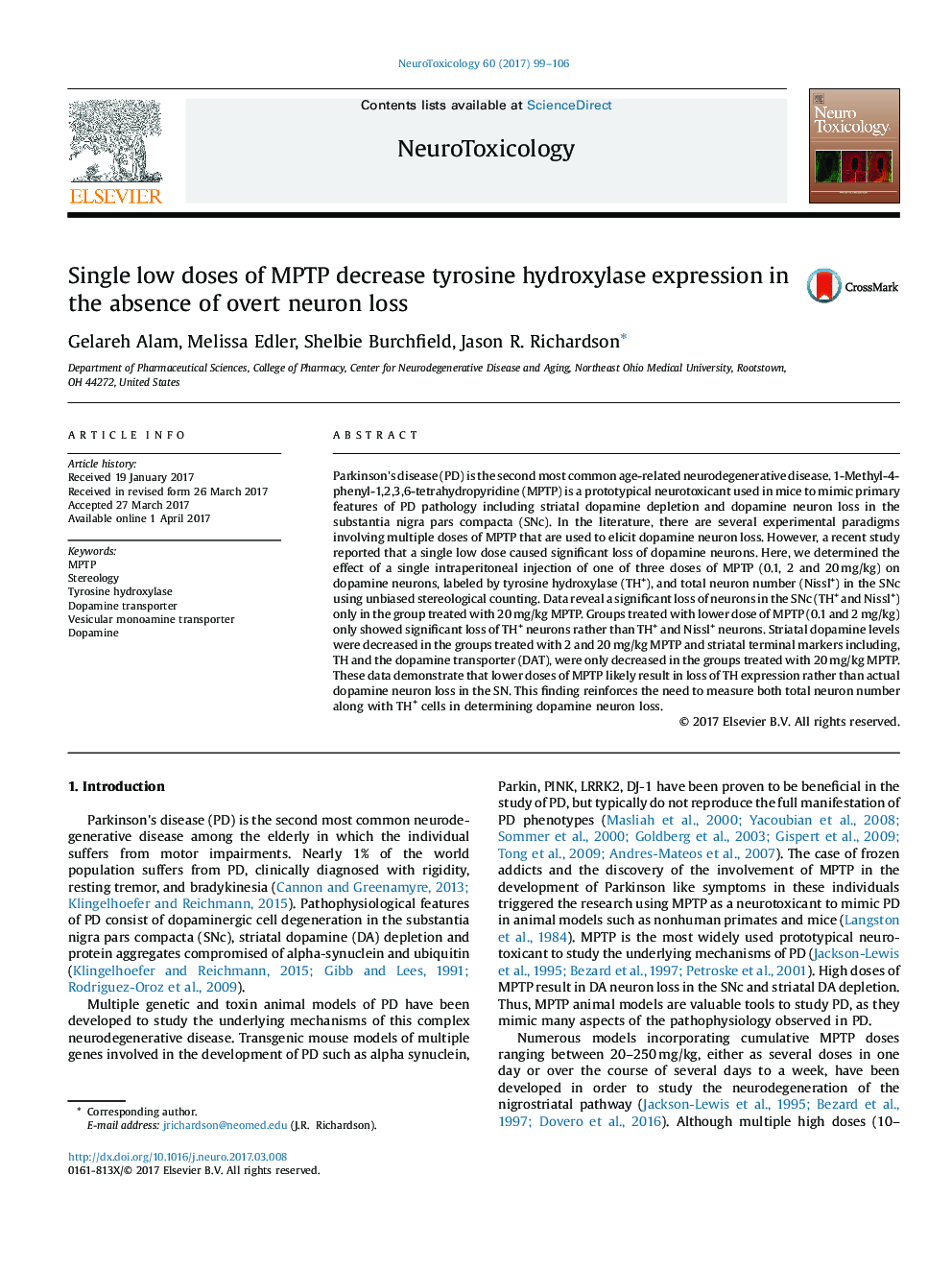| Article ID | Journal | Published Year | Pages | File Type |
|---|---|---|---|---|
| 5560827 | NeuroToxicology | 2017 | 8 Pages |
â¢Low doses of MPTP cause loss of TH expression rather than actual loss of neurons.â¢Higher doses of MPTP cause both loss of TH expression and neurons.â¢Striatal dopamine levels and terminal marker loss are consistent with cell loss.
Parkinson's disease (PD) is the second most common age-related neurodegenerative disease. 1-Methyl-4-phenyl-1,2,3,6-tetrahydropyridine (MPTP) is a prototypical neurotoxicant used in mice to mimic primary features of PD pathology including striatal dopamine depletion and dopamine neuron loss in the substantia nigra pars compacta (SNc). In the literature, there are several experimental paradigms involving multiple doses of MPTP that are used to elicit dopamine neuron loss. However, a recent study reported that a single low dose caused significant loss of dopamine neurons. Here, we determined the effect of a single intraperitoneal injection of one of three doses of MPTP (0.1, 2 and 20Â mg/kg) on dopamine neurons, labeled by tyrosine hydroxylase (TH+), and total neuron number (Nissl+) in the SNc using unbiased stereological counting. Data reveal a significant loss of neurons in the SNc (TH+ and Nissl+) only in the group treated with 20Â mg/kg MPTP. Groups treated with lower dose of MPTP (0.1 and 2Â mg/kg) only showed significant loss of TH+ neurons rather than TH+ and Nissl+ neurons. Striatal dopamine levels were decreased in the groups treated with 2 and 20Â mg/kg MPTP and striatal terminal markers including, TH and the dopamine transporter (DAT), were only decreased in the groups treated with 20Â mg/kg MPTP. These data demonstrate that lower doses of MPTP likely result in loss of TH expression rather than actual dopamine neuron loss in the SN. This finding reinforces the need to measure both total neuron number along with TH+ cells in determining dopamine neuron loss.
